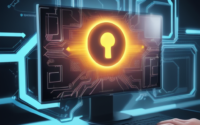Using digital twins to create virtual replicas of real-world systems
Using digital twins to create virtual replicas of real-world systems
Introduction to Digital Twins:
Digital twins are virtual representations of physical objects, processes, or systems. They are created by combining real-time data from sensors with computer-aided design (CAD) models, simulation tools, and advanced analytics. By replicating the physical objects in a digital world, digital twins provide a means to monitor, analyze, and optimize the performance of these objects in real-time.
Benefits of Using Digital Twins:
There are several benefits to using digital twins in various industries. One of the main advantages is the ability to monitor and predict the behavior of physical objects or systems in real-time. This can help in early detection of issues, predictive maintenance, and optimization of processes. Digital twins also enable simulation and testing of different scenarios without impacting the physical systems, saving time and resources.
Creating a Digital Twin:
The process of creating a digital twin involves several steps. The first step is to gather data from sensors embedded in the physical object or system. This data is then used to create a virtual model or replica using CAD software. The model is integrated with the real-time data stream from the sensors to ensure that the digital twin accurately represents the physical object. Advanced analytics tools are used to analyze the data and create simulations that mimic the behavior of the physical object.
Applications of Digital Twins:
Digital twins have a wide range of applications across industries such as manufacturing, healthcare, transportation, and smart cities. In manufacturing, digital twins can be used to monitor and optimize production processes, predict equipment failures, and improve product quality. In healthcare, digital twins can create personalized treatment plans based on patient data and simulate surgical procedures. In transportation, digital twins can optimize traffic flow, predict maintenance needs, and enhance safety measures. In smart cities, digital twins can help in urban planning, resource management, and disaster response.
Challenges and Future Trends:
While digital twins offer many benefits, there are also challenges to overcome. One of the main challenges is the integration of data from various sources and systems to create a holistic digital twin. Security and privacy concerns also need to be addressed to ensure the protection of sensitive data. Looking to the future, advancements in artificial intelligence, machine learning, and Internet of Things (IoT) technologies will continue to enhance the capabilities of digital twins. The use of digital twins is expected to grow across industries, leading to more efficient operations, improved decision-making, and better outcomes.

